Idaho
25th August - 1st September 2008
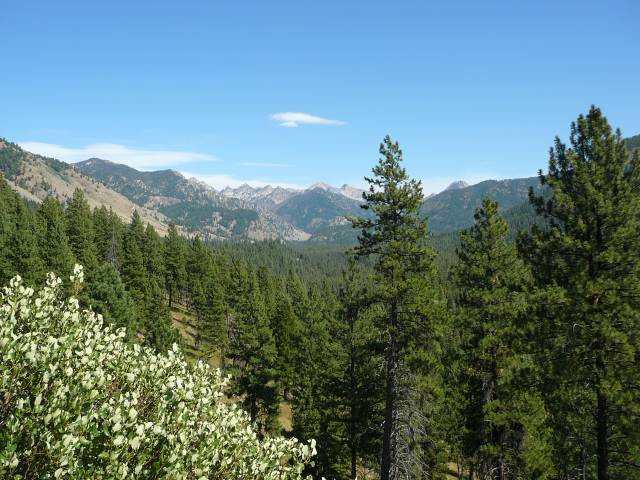
Wildlife Canyon Scenic Byway
McCall was a lovely but very touristy town on the huge Payette Lake. We were shocked, however, to find the first library in the USA which charged us for internet access!
Cleaned, washed and restocked we were ready for some more wilderness time and on advice from a helpful NFS ranger, we found ourselves bumping along the unpaved road to Bull Trout Lake in the Sawtooth Mountains.

Peaceful Bull Trout Lake where we caught our own dinner
(Rainbow Trout)
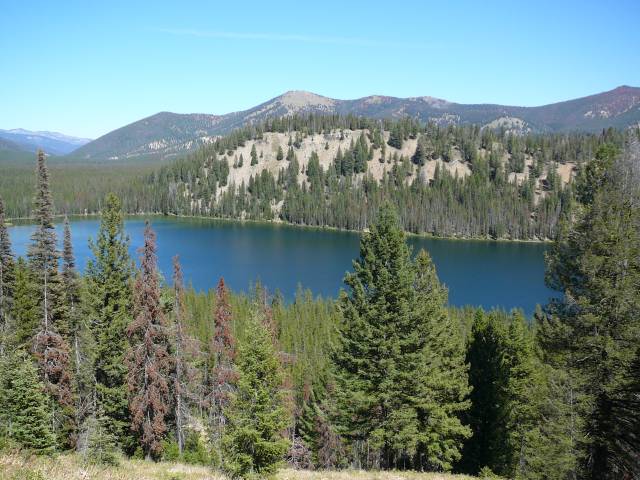
Bull Trout Lake was idyllic, at least until our second night at camp. It was then we realised that, even in August, it could freeze at 7000 feet. Even worse for those thin-blooded sailors who had spent too long in the Caribbean, we also realised that we couldn't get Harvey's propane cabin heater to work. Our only course of action was to have an early night, bury ourselves deep under the duvet and hope to put off getting up again, at least until the sun was high in the sky.
The second problem was that the temperature outside was still below freezing and inside wasn't much warmer. So first light found Phil and Christine scampering around in their pyjamas, teeth chattering, trying to find the squatter. We hunted around the campe's interior, nervously opening cupboards and hoping a raccoon or something worse wouldn't leap out.
After a while we tracked the noise down to the void under the shower base, which we learned was not sealed off from the outside and also led into our bathroom cupboard and our kitchen cupboards. On opening the kitchen cupboard door, there was the culprit just sitting staring at us. It was an enormous pack rat, the size of a guinea pig! So much for raising the bonnet (hood) to keep them at bay!
In desperation we asked our Idahoan neighbours for advice. They had never even heard of pack rats, another told us a scary story about trying to catch one for weeks. Finally, in despair, we threw all our gear, including the hastily deflated and frosty canoe, into Harvey and left the campsite, rat still aboard. We hoped that taking the bumpy gravel road out of the campground at higher than normal speed (Harvey is not fond of washboard gravel) would displace the little monster but hopefully none of the internal fixtures. Seemingly the plan worked.
Stanley had been found by serendipity but turned out to be a lovely spot in the beautiful Sawtooth Mountains. We checked out the National Forest Service Campground nearby but decided to stay put at Elk Mountain. After all, for only a couple of dollars more each night, we could have the luxury of heating and long hot showers every night and we'd had quite enough close encounters with forest wildlife for a while. We also had the temptation of the cafe's delicious smoked prime rib, fresh baked pies and ice cream too close for comfort, so we made the most of it all. The town was also surrounded by wonderful fly fishing rivers, from which the fisherman got maximum enjoyment.
We were still only about half way up this hill to the Falls, when we decided that maybe we weren't meant to climb all the way to the waterfall on this "easy" trail. After flopping down wearily for a picnic break, we decided we didn't need to see another waterfall badly enough to continue the perilous ascent. The downward journey proved even tricker and we were glad of our new hiking sticks, which saved us from accidental rapid descent on several occasions.
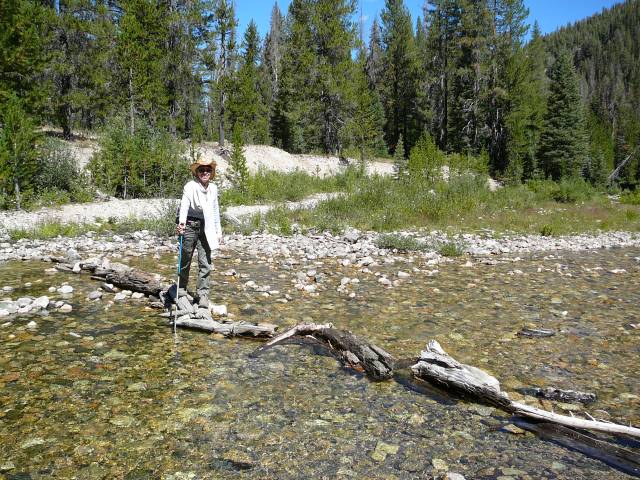
All the peril wasn't over when we got back to the bottom of the hill!
Along the same road we came across the Yankee Fork Gold Dredge. This was a most curious vessel designed to dig its own trench in which to float whilst sorting through all the removed rock for gold. Built in location, the vessel was 112 feet long, 54 feet wide, 64 feet high and weighed 988 tons. The road lined with mounds of rock rubble in strange crescent formations were evidence of its former work. Now the dredge had been converted into a museum and we enjoyed a fascinating tour. The dredge was run 24/7, in three shifts, from 1940 to 1952, slowing digging its way up the valley.
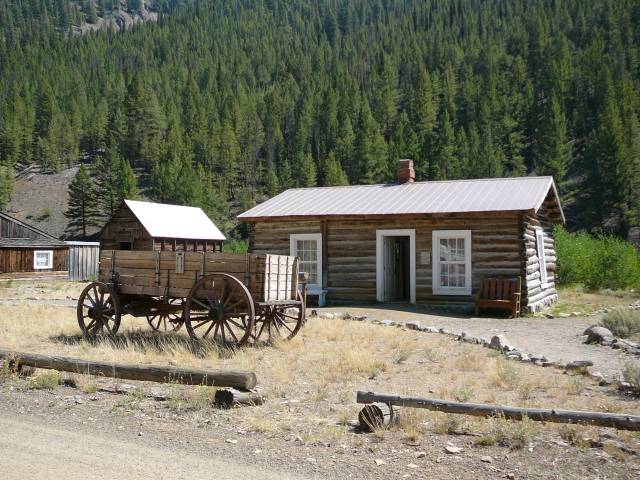
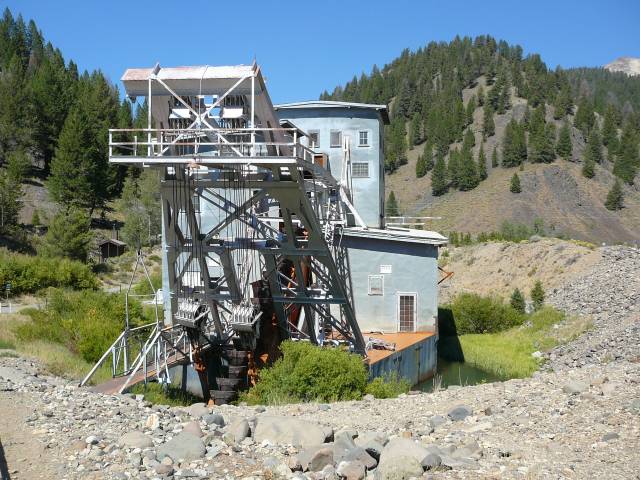
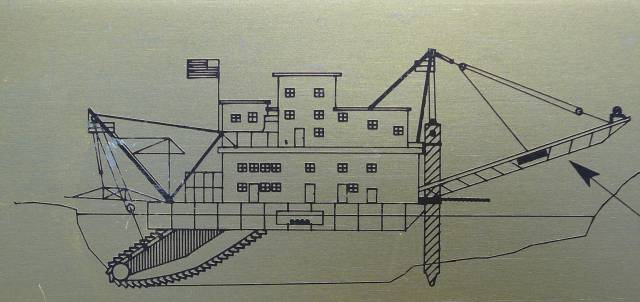
Yankee Fork Gold Dredge
Fishing in the stream and ponds near the dredge was like shooting fish in a barrel, the waters were so heavily stocked that you'd get a bite on almost every cast. However in view of the local environment, we decided it was prudent to release all our catch!
Back at the campground we made a new friend, Norm. He invited us to see his beautiful log home nearby. We jumped at the chance as we'd been admiring the local log homes from the exterior but hadn't had the chance to see the inside. Later in the day Norm and his family invited us along to Redfish Lake Lodge with them to see a friend's band performing on the lawn outside. We had great fun.
Norm's family suggested we might want to head to Ketchum, around 60 miles away, the next day, to see the "world's largest non-motorised parade", known as the annual Wagon Days parade.
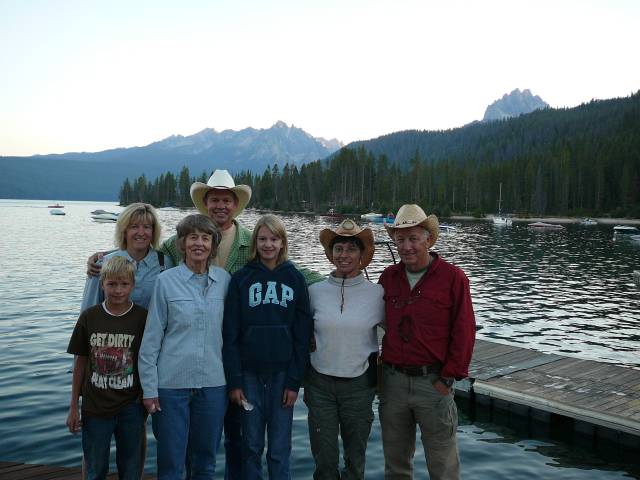
Partying with Norm's Family
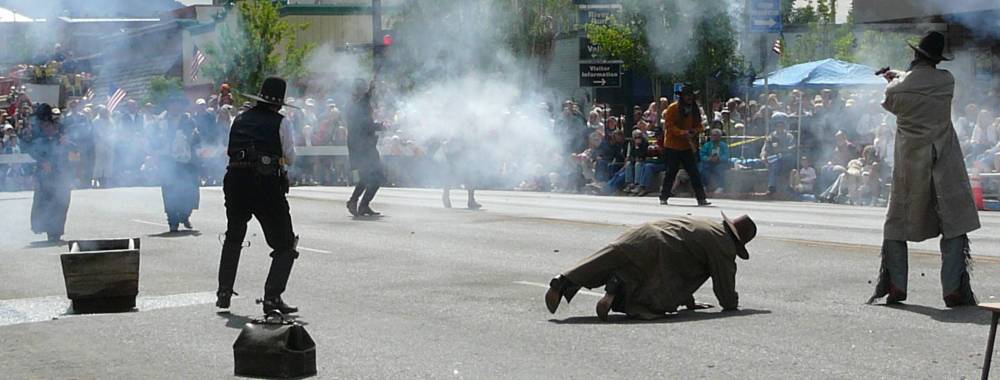
Next came the parade with over 90 different entries. Most were horse powered, with the exception of a number of mules, bulls and even a Welsh corgi powered carriage! The whole thing rounded off with the "big hitch", a train of old ore wagons drawn by mules too numerous to count as they passed by. Of course, animal powered vehicles bring different pollution issues to motorised vehicles but pollution control was efficiently managed by the local hockey team, working on roller blades with big shovels!
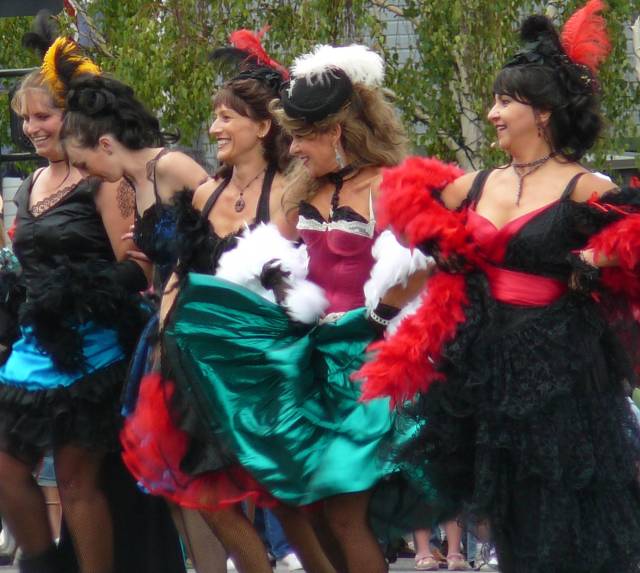
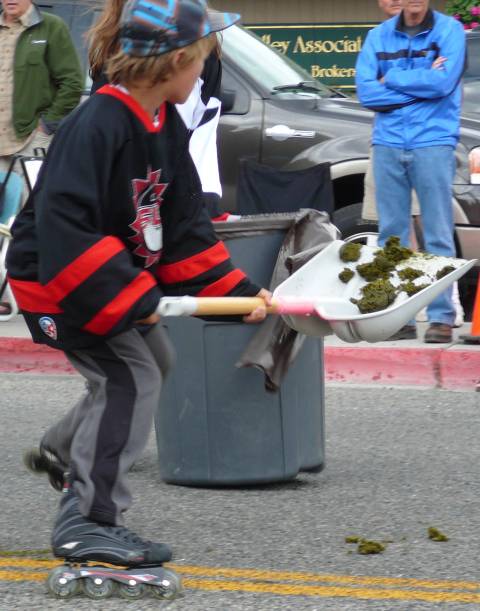
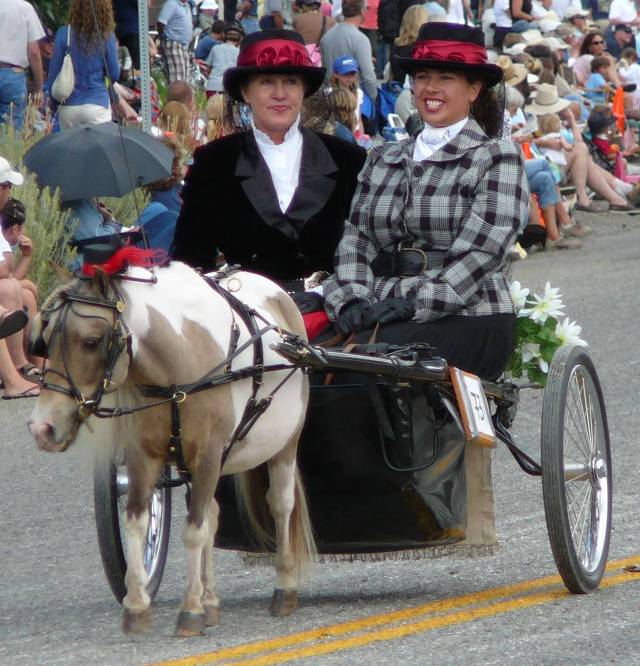
Scenes from Ketchum and Sun Valley "Wagon Days" Parade.
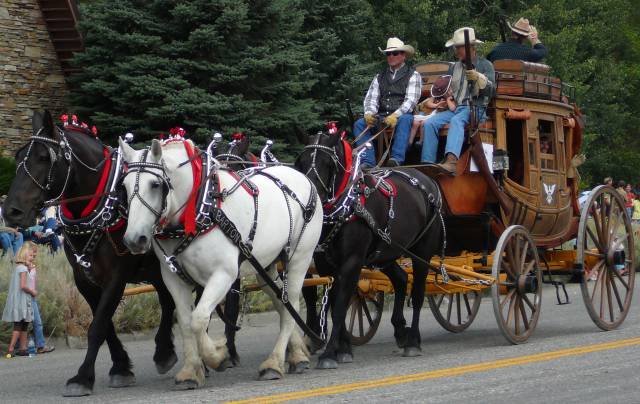
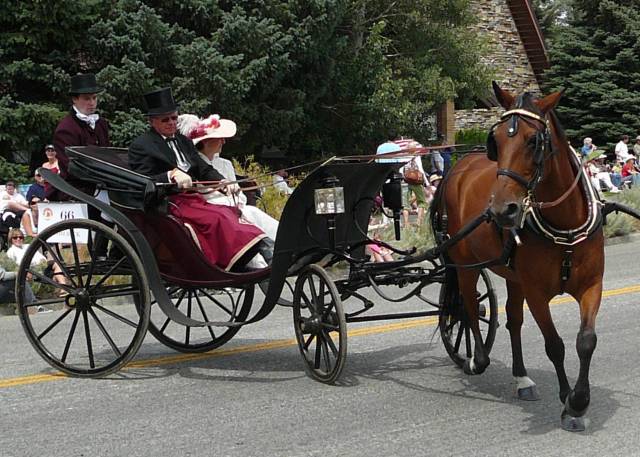
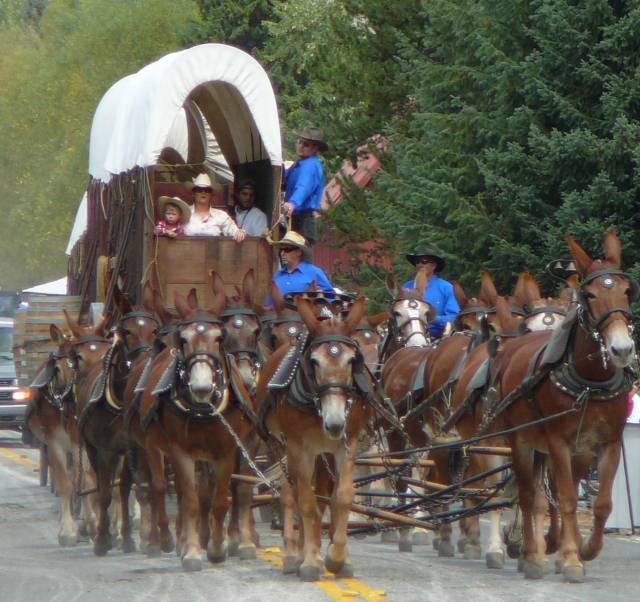
The Big Hitch
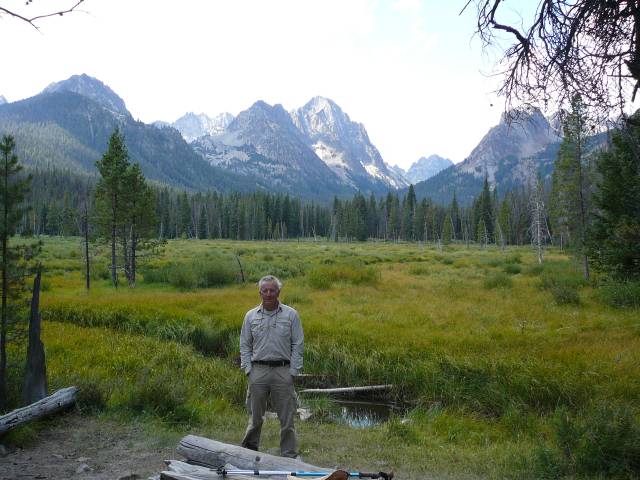
Hiking in the Sawtooth Mountains
Next we took our planned hike along the Fishhook Creek trail to a beautiful meadow which opened onto stunning views of the mountains. We timed our trip right. As we arrived back at the trail head, the rain started.
What did take us by surprise was the snow which appeared overnight on the surrounding hills. It was the 1st September and the snow line was forecast to drop to the altitude where we were camped that night. We had planned another day in Stanley but decided to err on the side of caution and leave a day earlier. We liked Stanley but didn't want to spend the whole winter snowed in there! We had to make the trip over the high and snowy Galena pass to head southwards and stopped at the top to have a quick snowball fight!
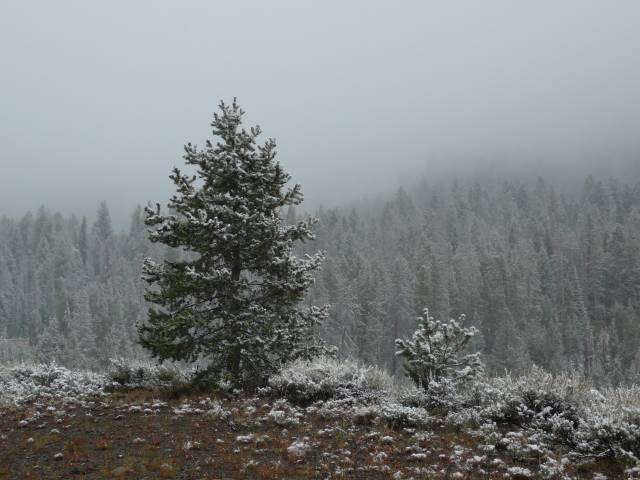
It's snowing before Labor Day!
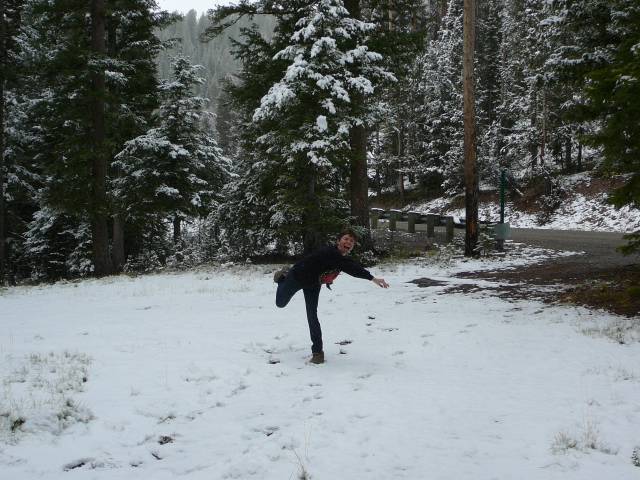
1st September, Stanley, Idaho.
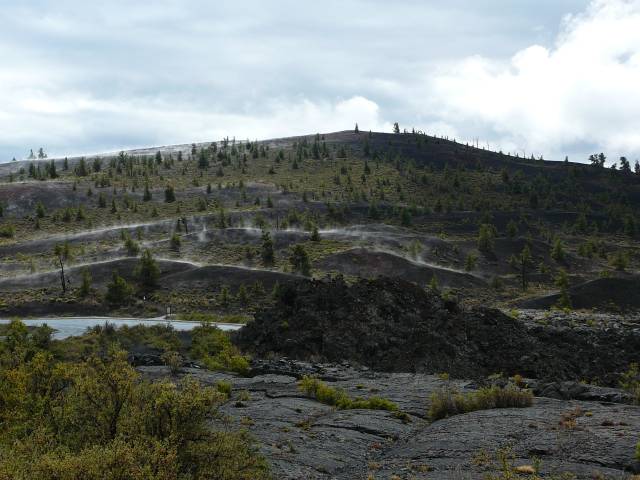
Craters of the Moon after the downpour
The landscape was surreal, lava fields, spatter cones and craters. We walked through lava tubes, huge tunnels beneath the surface and wandered through the "Devil's Orchard". A nature trail showcasing the gnarled trees and dwarf plants managing to eek out their survival in this harsh terrain. We arrived just after a huge downpour, a rare event in these parts and as we took our tour, steam was rising from the hot, blackened terraces of lava as the rainwater evaporated.
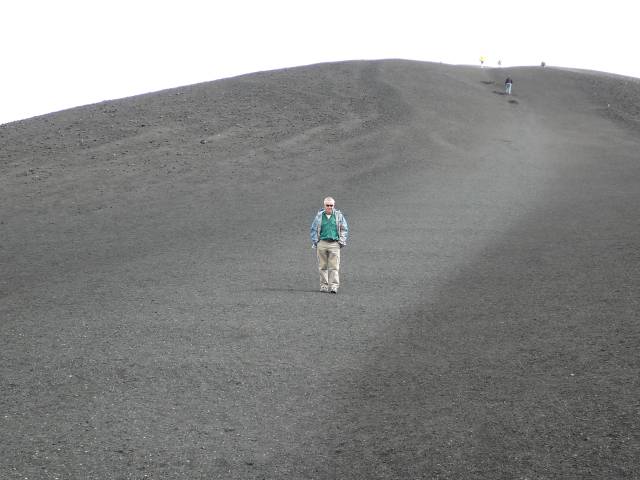
Phil walks the Inferno Cone
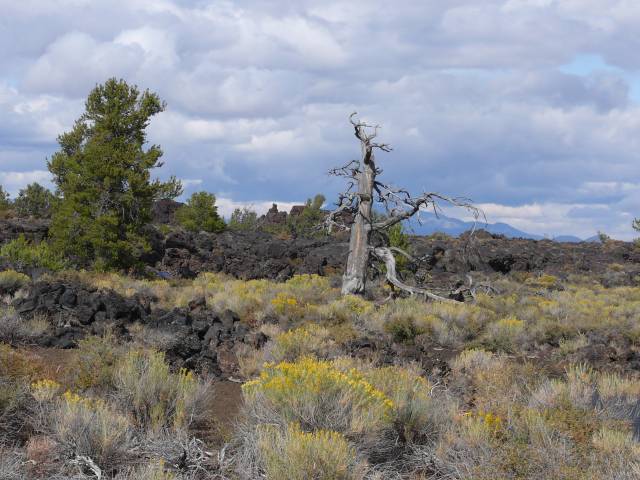
Devil's Orchard